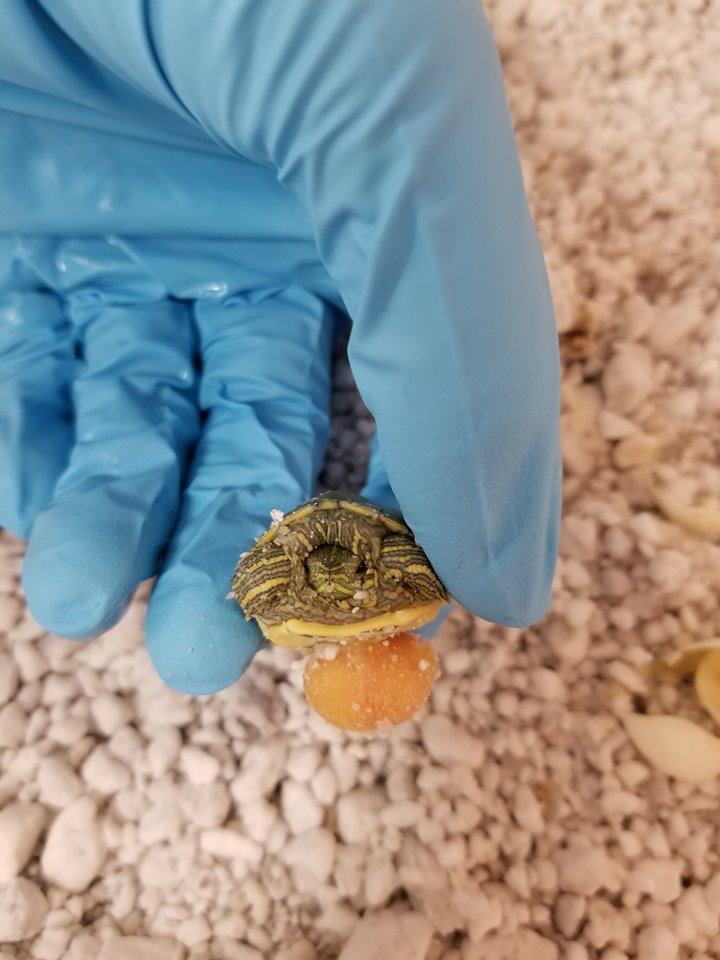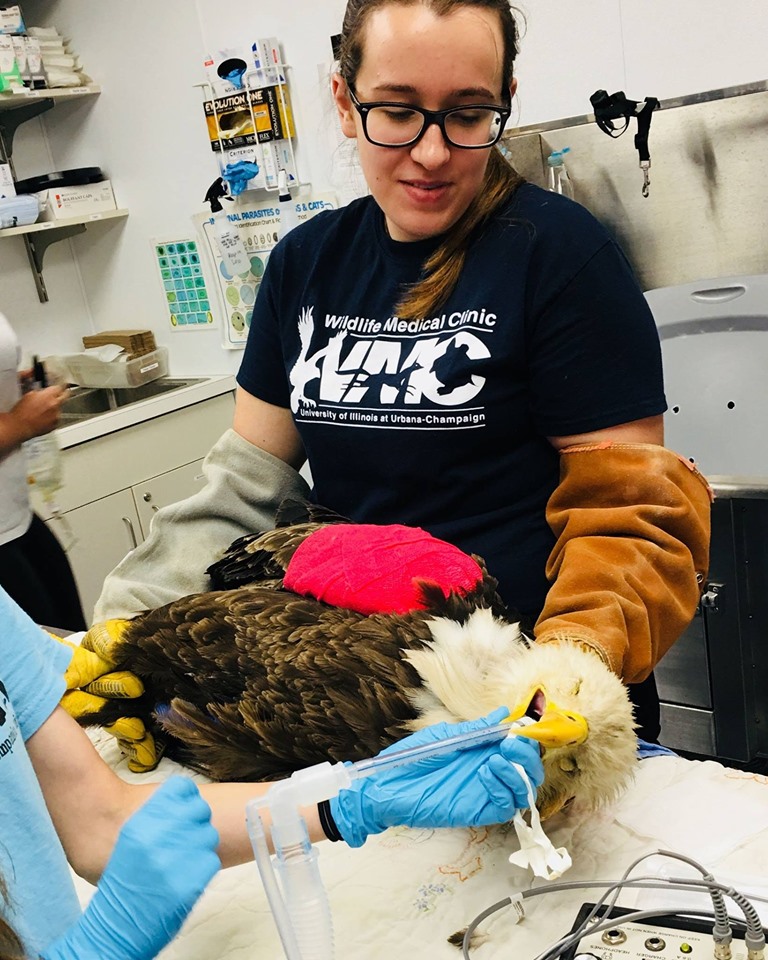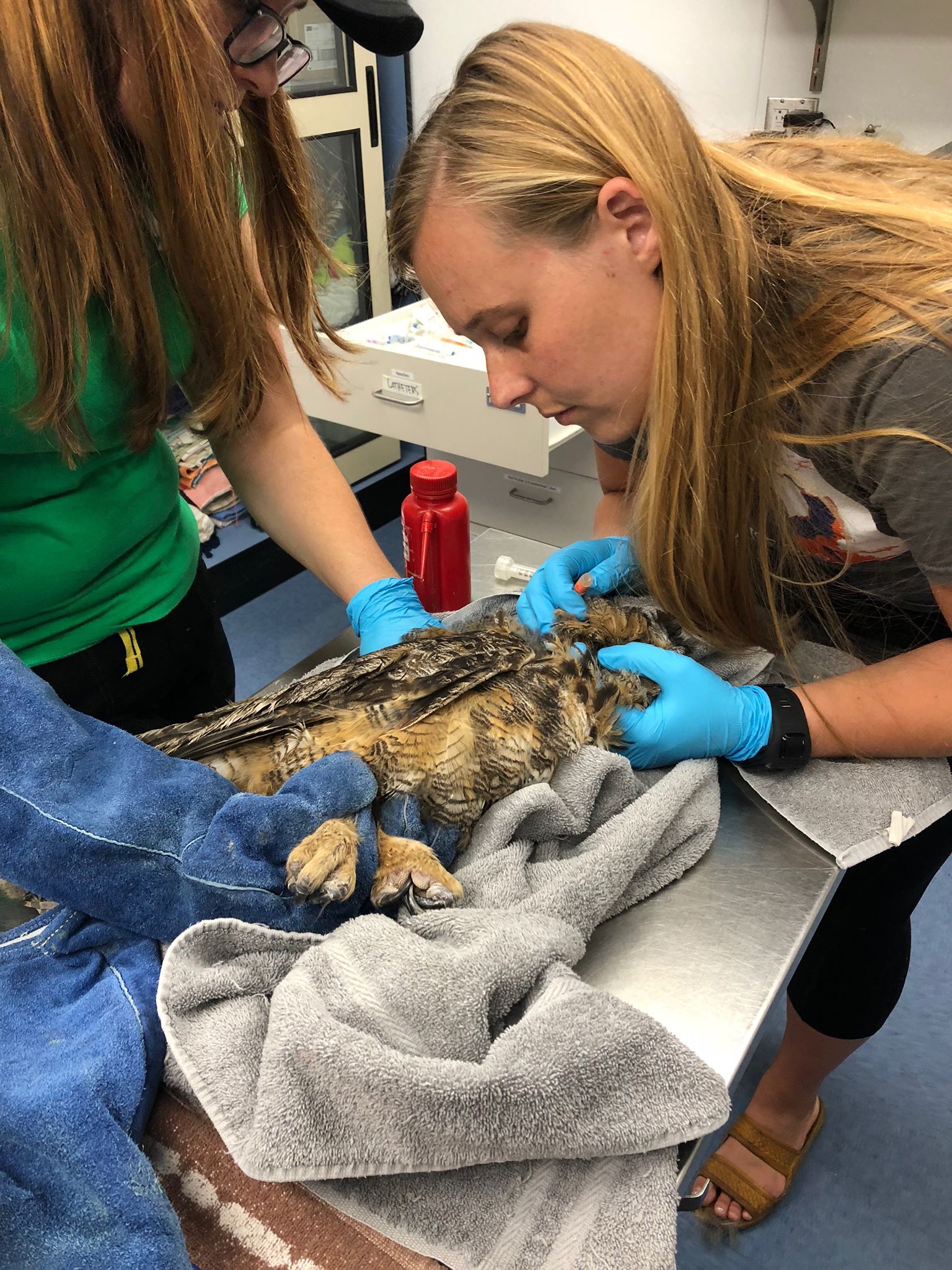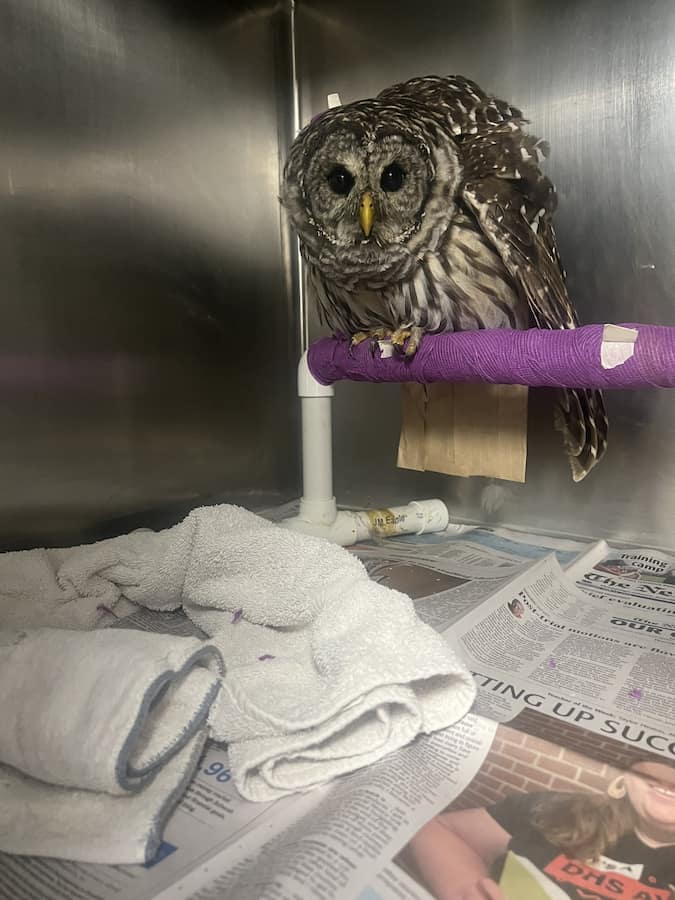https://www.facebook.com/ciliving/videos/648236295697004/UzpfSTYxNDA1ODg5MzI4OjEwMTU3NTUxMDk0MDQ0MzI5/
If you’ve ever brought an injured or sick animal to the Wildlife Medical Clinic, you might wonder what we do for our patients. Our student-run facility takes care of these animals much like your own pet would be cared for at the U of I Veterinary Teaching Hospital.

Every animal first receives a complete examination, and the first part of any exam is reviewing the patient’s history. While the finders of our wildlife patients often can’t tell us much about how the animal came to be under their care, often it’s the few details they can provide which make all the difference. In some cases, the history is very specific and we know exactly when the incident occurred, such as when a bystander sees an animal get hit by a car. Other cases are more mysterious, such as an animal found in someone’s backyard unable to walk properly but with no obvious trauma.

The next step is our hands-off exam. We observe the animal’s breathing rate and character, whether they’re standing or lying down, and many other visual cues that will help us narrow down the animal’s ailment. This is also an opportunity to evaluate the urgency of treatment. For example, if an animal is struggling to breathe, we need to intervene immediately. In other cases, animals may need some quiet time to calm down due to the stress of being transported. Most of the animals we see can benefit from supplemental oxygen and rest in a quiet cage before our hands-on portion of the exam.
When an animal can tolerate handling, we start by weighing them. An accurate weight is extremely important. For animals sensitive to stress, we use their weight to calculate a species-specific sedative dose. This helps us reduce stress as much as possible when handling our patients. There are different ways to perform a physical exam, but we always teach our students to perform the exam in the same order each time. A common method is to start at an animal’s head, evaluating their eyes, ears, nose, and mouth, then continue systematically to an animal’s tail, observing each bodily system.

Once we complete a thorough exam, we develop a plan for our patient that often includes diagnostic testing. We regularly collect blood samples for analysis in our in-clinic laboratory. Another common diagnostic we use is radiography, or “x-rays”. This allows us to evaluate the skeletal system as well as other body systems. We are fortunate to have access to the many veterinary specialists at the Veterinary Teaching Hospital, such as ophthalmology or dermatology, to help guide our diagnostics and care, especially during challenging cases. Surgery and physical therapy can be components of our treatment plan as well. In addition to providing medical care, our patients receive tailored housing and diet formulation as a part of their comprehensive treatment plan. Some factors we account for when formulating a patient’s diet include their species, age, and health status.
This process, from physical exam to a patient plan, allows us to provide the best care for our patients. Over a patient’s time in the clinic we may repeat this process, using physical exams findings to gauge the progress a patient is making and adjusting our treatment plan accordingly.
By Monika Liszka, Class of 2022



